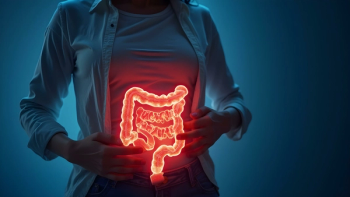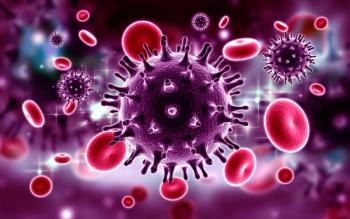
- Applied Clinical Trials-12-01-2020
- Volume 29
- Issue 12
Radiomics: What It is and What It Can Do for Clinical Trials
Radiomics can help life sciences companies realize the full value of their imaging pipelines.
Radiomics1 is a new, emerging field of technology that can help life sciences companies discover more about medical images, enabling them to conduct clinical trials with more accuracy and speed while driving greater personalization of treatment.
This emerging yet robust approach to imaging analytics extracts meaningful information by discerning vast amounts of radiomic data points from digital images, curates and annotates it, then analyzes the quantitative imaging data to deliver a wealth of information.
Radiomics unleashes powerful insights about the characteristics and progress of lesions and tumors that are not discernible from traditional reading methods of imaging modalities such as CT, MRI, or PET scans so life sciences organizations can leverage them in new ways. Further, this novel set of imaging pattern data enables the discovery of imaging biomarkers which have been proven to be both predictive and prognostic regarding clinical outcomes and treatment pathways.
A quick primer on the field of radiomics
In healthcare, not all data are created equal. Despite the popular focus on electronic health records, some observers may be surprised to know that approximately 90% of healthcare data2 is concentrated in just one sector—medical imaging—and 97% of that goes unused or unanalyzed.
Traditionally, when clinical or research radiologists have reviewed images of lesions or tumors to determine the effectiveness of a pharmaceutical or other treatment, their view has been limited to two dimensions—length and width. As a result, their primary method of evaluation of the progress of that lesion is to use a pair of calipers across the vertical and horizontal axes to determine whether the lesion is growing or changing. That’s like looking at a photo of an iceberg from the top.
The reality is that lesions and tumors have multiple dimensions, along with thousands of other structural features that define them. Human cancers in particular exhibit strong phenotypic differences that can be visualized noninvasively by medical imaging. Gaining this view, however, requires seeing below the line, and that’s where radiomics enters the picture.
At its foundation, radiomics starts by building an artificial-intelligence-enabled model based on thousands of healthy organ images. The algorithms ingest thousands of variations from that model that show lesions, tumors, their progress, and outcomes. As a result, rather than being limited to looking simply at length and width, these AI-driven analytics can use this information to extract unseen data from the digital image to measure and determine depth, volume, density, doubling size, tumor textures and other features that cannot be observed optically in an image.
These analytics not only deliver a view that formerly could only be achieved through invasive surgery such as biopsies; they also provide information about lesion changes that have never been available by any means.
Additionally, the deep learning capabilities inherent in radiomics enable the system to improve itself as more images are ingested and analyzed and more outcomes are confirmed—regardless of the type of lesion. Over time, the system can track the progression or regression of lesions more accurately to determine the effectiveness of the treatment, providing new insights to life sciences organizations to leverage in therapeutic pipeline decisioning, such as accelerating or ending drug development based on treatment efficacy.
What it means for clinical trials
Radiomics’ ability to extract data from digital images and show what would otherwise be unseen can be used by life sciences organizations in clinical trials in the following three essential ways:
Accelerate therapy development: Radiomics can help accelerate therapy development and clinical trials by enabling researchers to compare sequential images to determine how a lesion has changed, indicating whether the drug is effective, why it is effective, to what degree it is effective, and how long it takes to achieve that effect. This information can be gathered in real-time during the trial rather than waiting until it is completed (as typically occurs) to enable the life sciences organization to adapt the trial design based on radiomic features and imagining biomarkers.
Enable greater personalization of treatment: Radiomics can contribute value in delivering the last mile in personalized medicine. The combination of genomic data, plus the type of phenotypic data radiomics derives from images, provides even greater adaptability to clinical trials by immediately mapping the effectiveness of drugs, showing whether treatments under trial are more effective for patients with shared characteristics.
Discover new biomarkers: In the long-term, radiomics can be used to discover imaging biomarkers to aid in clinical decision-making and treatment. Once developed, life sciences organizations can leverage these biomarkers in clinical trials to inform and manage patient recruitment, assignment to trial arms, and cohort design, such as inclusion criteria and stratification.
More than any other technology, radiomics can help life sciences companies realize the full value of their imaging pipelines. Many in the life sciences industry may not be familiar with this nascent field yet, but as its benefits for clinical trials become more widely appreciated, they soon will be.
References
https://www.ncbi.nlm.nih.gov/pmc/articles/PMC6234198/ https://www.gehealthcare.com/article/beyond-imagingthe-paradox-of-ai-and-medical-imaging-innovation#:~:text=A%20staggering%2090%20percent%20of%20all%20healthcare%20data%20comes%20from%20medical%20imaging.&text=AI%2Dpowered%20medical%20imaging%20systems,%3A%20more%20accurate%2C%20quality%20care .
Rose Higgins serves as Chief Executive Officer of
Articles in this issue
about 5 years ago
E6 (R3) on Horizonabout 5 years ago
Industry Forced to Rethink Patient Participation in Trialsabout 5 years ago
Managing Risks in Clinical Trials During a Pandemic with ICH E6 (R2)about 5 years ago
Applied Clinical Trials, December 2020 Issue (PDF)about 5 years ago
Importance of Diversity in Parkinson’s Researchabout 5 years ago
Regulatory Data: How Technology Can Help ClinOps Surviveabout 5 years ago
Decentralized Trials, Pros and Consabout 5 years ago
Public Trust and the ‘Last Mile’ for COVID-19 VaccinesNewsletter
Stay current in clinical research with Applied Clinical Trials, providing expert insights, regulatory updates, and practical strategies for successful clinical trial design and execution.




